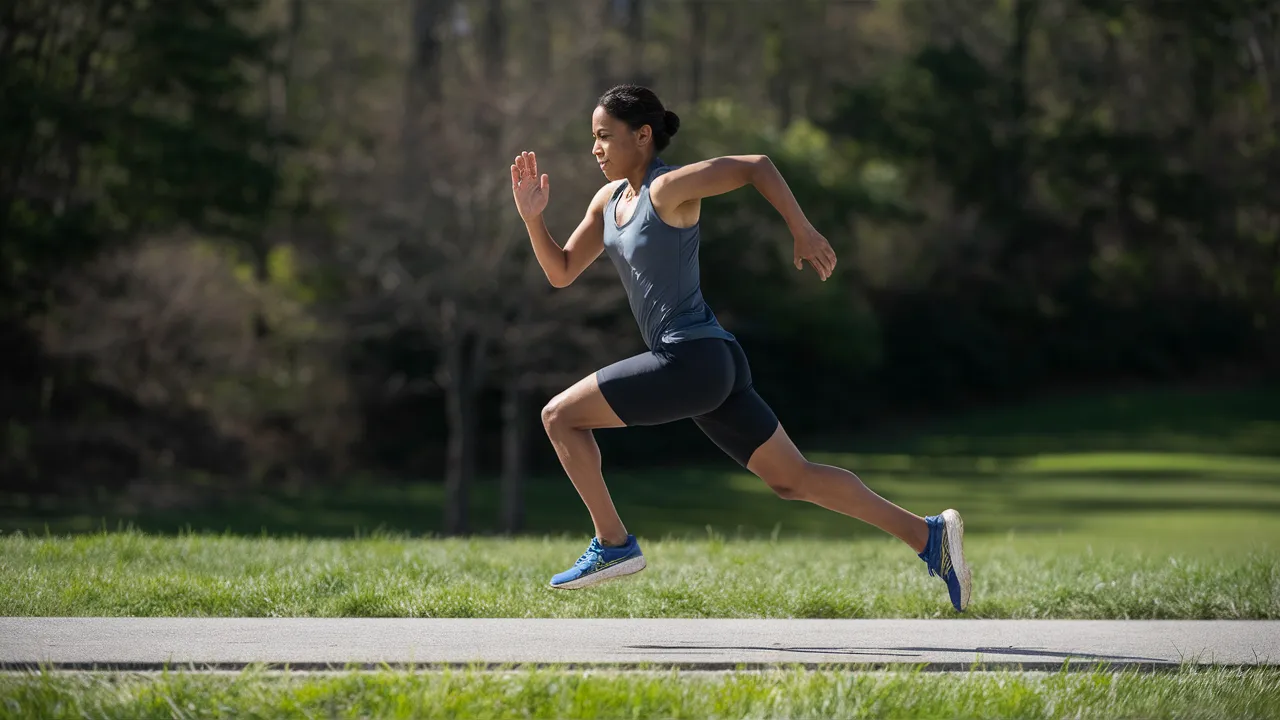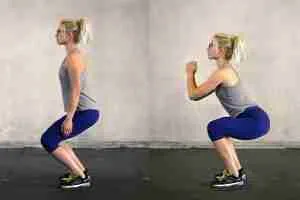
The Importance of Proper Running Form

6 min read
Running is an excellent form of exercise that can improve cardiovascular health, increase endurance, and burn calories. However, many runners overlook the importance of proper running form. Maintaining proper running form not only reduces the risk of injury but also enhances running efficiency, making running easier and more enjoyable.
In this article, we will discuss the importance of proper running form and provide tips and techniques for efficient running.
Why Proper Running Form Matters
1. Reduced Risk of Injury
Improper running form can put excessive strain on muscles, joints, and ligaments, leading to injuries such as plantar fasciitis, shin splints, and runner’s knee.
By maintaining proper form, runners can avoid overuse injuries and improve joint health.
2. Enhanced Running Efficiency
Proper running form allows runners to conserve energy and move more efficiently, reducing fatigue and improving overall running performance. It also helps to distribute the workload evenly throughout the body, preventing certain muscles from becoming overworked and fatigued.
3. Improved Running Mechanics
Proper running form helps to improve running mechanics, allowing runners to run faster, longer, and with less effort. It also helps to reduce impact forces on the body, resulting in a smoother and more comfortable running experience.
Key Components of Proper Running Form

| Component | Description | Tips |
|---|---|---|
| Head and Shoulders | Keep your head upright and look ahead. Shoulders should be relaxed and level, avoiding any hunching or stiffness. | Maintain a neutral gaze about 10-20 feet ahead. Roll your shoulders back to keep them relaxed. |
| Arms | Your arms should move naturally with a slight bend at the elbows, swinging forward and backward. Avoid crossing them over your body. | Keep your hands relaxed, as if holding a potato chip. Ensure your arms are moving in coordination with your legs. |
| Torso and Hips | A strong, stable core is crucial for maintaining proper posture. Your torso should be upright, with a slight forward lean from the hips. | Engage your core muscles to support your torso. Avoid excessive leaning forward or backward. |
| Legs and Stride | Your legs should move in a natural, smooth motion. Aim for a mid-foot strike, with your foot landing directly under your hip. Avoid overstriding. | Focus on shorter, quicker steps, rather than long strides. This reduces the impact on your joints and improves efficiency. |
| Feet | Your feet should land lightly on the ground, rolling from the midfoot to the toes. Avoid heel striking or toe running, which can lead to injuries. | Think about “quiet” running – the less noise your feet make, the better your form likely is. |
Why Proper Running Form Matters
1. Injury Prevention
One of the primary reasons to focus on your running form is injury prevention. Poor form can lead to common running injuries such as shin splints, runner’s knee, and plantar fasciitis. By maintaining proper form, you reduce the stress on your muscles and joints, lowering the risk of injury.
2. Improved Performance
Proper running form allows you to run more efficiently, meaning you can run faster and longer without expending unnecessary energy. An efficient form also helps in maintaining a steady pace and conserving energy for longer distances or faster sprints.

Tips for Maintaining Proper Running Form
-
Posture
Maintain a tall and upright posture, with shoulders relaxed and arms bent at a 90-degree angle. Keep the head and neck in a neutral position, looking straight ahead rather than down at the ground.
-
Foot Strike
Strike the ground with the midfoot or forefoot, rather than the heel. This helps to distribute impact forces evenly throughout the foot and reduces the risk of injuries such as plantar fasciitis and shin splints.
-
Cadence
Maintain a cadence of 180 steps per minute or higher. This helps to reduce the impact forces on the body and improves running efficiency.
-
Arm Swing
Keep the arms relaxed and swinging naturally at the sides of the body. Avoid crossing the arms in front of the body, which can lead to inefficient running mechanics.
-
Breathing
Breathe deeply and rhythmically, taking long, slow breaths rather than shallow, rapid breaths. This helps to improve oxygen uptake and running efficiency.
Techniques for Improving Running Form

1. Strengthening Exercises
Incorporate exercises such as lunges, squats, and leg curls into your workout routine to strengthen the muscles used in running. This helps to improve running mechanics and reduce the risk of injuries. For example, squats are particularly beneficial for building strength in the quadriceps, hamstrings, and glutes, which are crucial for maintaining proper running form.
2. Running Drills
Incorporate running drills such as high knees, butt kicks, and strides into your workout routine to improve running form and mechanics. These drills help to enhance your running efficiency and speed by reinforcing proper movement patterns.
3. Running Shoes
Invest in a good pair of running shoes that provide adequate support and cushioning. Proper footwear helps to reduce the impact forces on the body, improving running mechanics and lowering the risk of injuries.
4. Video Analysis
Record yourself running and analyze your form. Look for any areas where you can improve, such as foot strike, posture, or arm swing. Regularly reviewing your running technique can help you identify weaknesses and make adjustments in your training to enhance your overall running form.
Conclusion
Proper running form is essential for reducing the risk of injury and improving running efficiency. By incorporating the tips and techniques discussed in this article, runners can maintain proper form, improve running mechanics, and enjoy a more efficient and enjoyable running experience.
FAQs
- How long does it take to improve running form?
Improving running form takes time and consistent effort. It may take several weeks or months to see significant improvements in running form and mechanics.
- Can running with improper form cause long-term damage?
Yes, running with improper form can cause long-term damage. Over time, improper form can lead to chronic injuries and joint damage, which can impact a runner’s ability to continue running long-term.
- How can I tell if I have proper running form?
You can tell if you have proper running form by recording yourself running and analyzing your form. You can also consult with a running coach or physical therapist for feedback and guidance on improving your form.
- Can I improve my running form without changing my shoes?
Yes, you can improve your running form without changing your shoes. Strengthening exercises, running drills, and video analysis can all help to improve running form and mechanics.
- Is it necessary to maintain proper running form during a race?
Yes, maintaining proper running form during a race is important for reducing the risk of injury and improving running efficiency.
However, it’s also important to listen to your body and adjust your form as needed to maintain your pace and endurance throughout the race.


